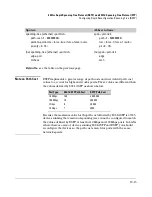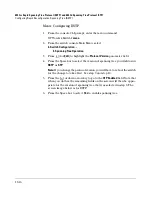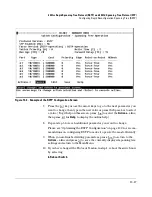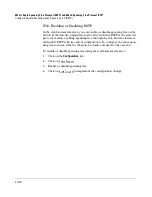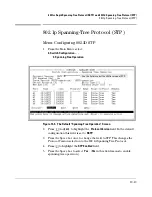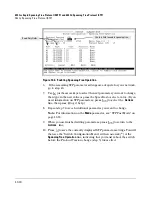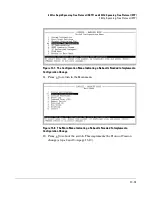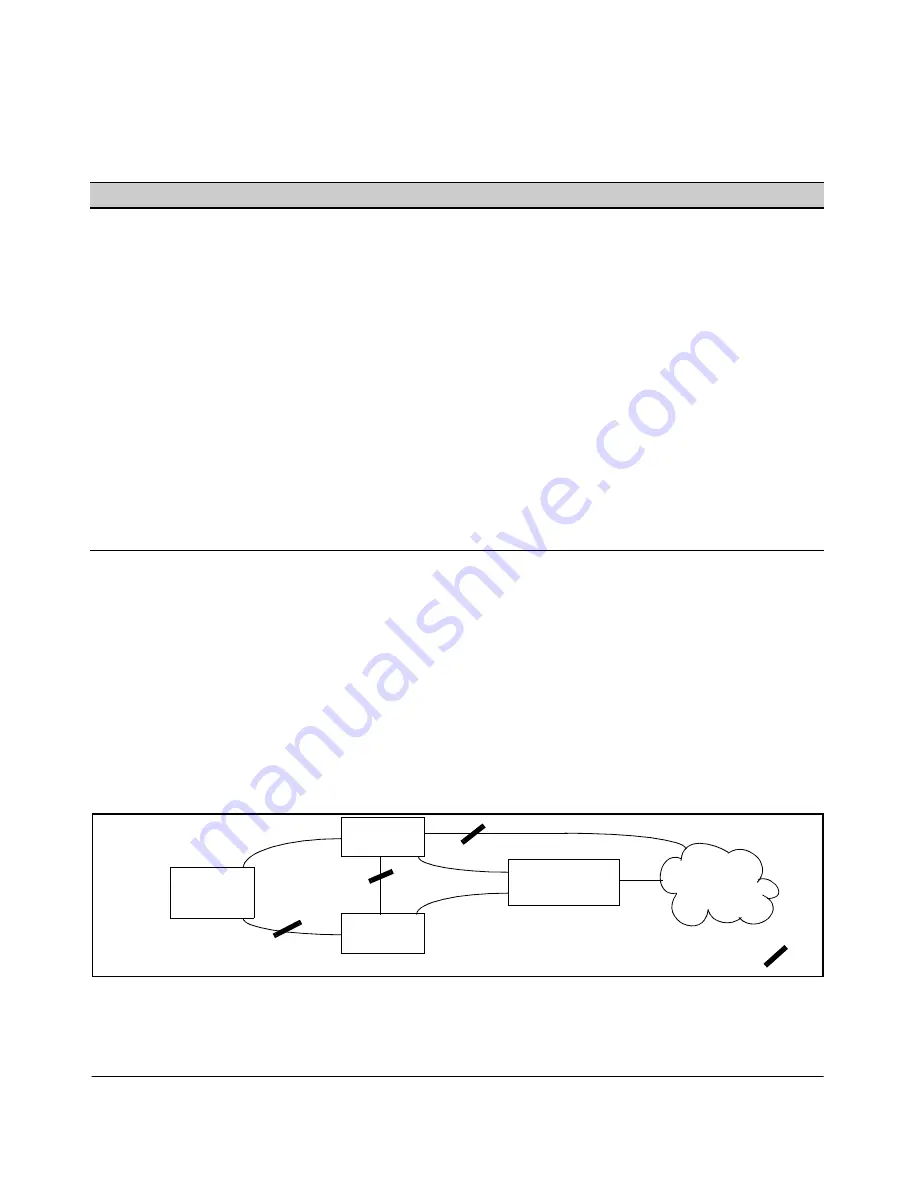
13-29
802.1w Rapid Spanning Tree Protocol (RSTP) and 802.1d Spanning Tree Protocol (STP)
802.1p Spanning-Tree Protocol (STP)
Terminology
When single-instance spanning tree (STP) is running in a network and a
forwarding port goes down, a blocked port typically requires a period of
(2 x (
forward delay
) + link down detection)
to transition to forwarding. In a normal spanning tree environment, this
transition is usually 30 seconds (with the
Forward Delay
parameter set to its
default of 15 seconds). However, by using the fast-uplink spanning tree
feature, a port on a Series 4100GL switch used as an
edge switch
can make
this transition in as little as ten seconds. (In an STP environment, an
edge
switch
is a switch that is connected only to switches that are closer to the STP
root switch than the edge switch itself, as shown by switch "4" in figure 13-12,
below.)
Figure 13-12. Example of an Edge Switch in a Topology Configured for STP Fast Uplink
Term
Definition
downlink port
(downstream port)
A switch port that is linked to a port on another switch (or to an end node) that is sequentially
further away from the STP root device. For example, port "C" in figure 13-11, above, is a
downlink port.
edge switch
For the purposes of fast-uplink STP, this is a switch that has no other switches connected to
its downlink ports. An edge switch is sequentially further from the root device than other
switches to which it is connected. Also termed
wiring closet switch
or
leaf switch
. For
example, switch "4" in figure 13-12 (page 29) is an edge switch.
interior switch
In an STP environment, a switch that is sequentially closer to the STP root device than one
or more other switches to which it is connected. For example, switches "1", "2", and "3" in
figure 13-12 (page 29) are interior switches.
single-instance spanning
tree
A single spanning-tree ensuring that there are no logical network loops associated with any
of the connections to the switch, regardless of whether there are any VLANs configured on
the switch. For more information, see "Spanning Tree Protocol (STP)" in chapter 9, "Configuring
Advanced Features", in the Management and Configuration Guide for your switch.
uplink port
(upstream port)
A switch port linked to a port on another switch that is sequentially closer to the STP root
device. For example, ports "A" and "B" in figure 13-11 on page 28 are uplink ports.
wiring closet switch
Another term for an "edge" or "leaf" switch.
Switch
4
(4108-Edge)
Switch
3
Switch
1
(Root)
Switch
2
Port 3
Port 5
Link blocked by STP:
1
6
8
LAN
Содержание ProCurve 4104GL
Страница 1: ...hp procurve series 4100gl switches management and configuration guide www hp com go hpprocurve ...
Страница 2: ......
Страница 26: ...xxiv Getting Started Need Only a Quick Start ...
Страница 34: ...1 8 Selecting a Management Interface Advantages of Using HP TopTools for Hubs Switches ...
Страница 50: ...2 16 Using the Menu Interface Where To Go From Here ...
Страница 172: ...8 24 Time Protocols SNTP Messages in the Event Log ...
Страница 240: ...10 30 Configuring for Network Management Applications CDP ...
Страница 288: ...11 48 Port Based Virtual LANs VLANs and GVRP GVRP ...
Страница 350: ...13 42 802 1w Rapid Spanning Tree Protocol RSTP and 802 1d Spanning Tree Protocol STP Web Enabling or Disabling STP ...
Страница 480: ...C 38 Troubleshooting Restoring a Flash Image ...
Страница 486: ...D 6 MAC Address Management Determining MAC Addresses ...
Страница 490: ......
Страница 502: ...12 Index ...
Страница 503: ......

